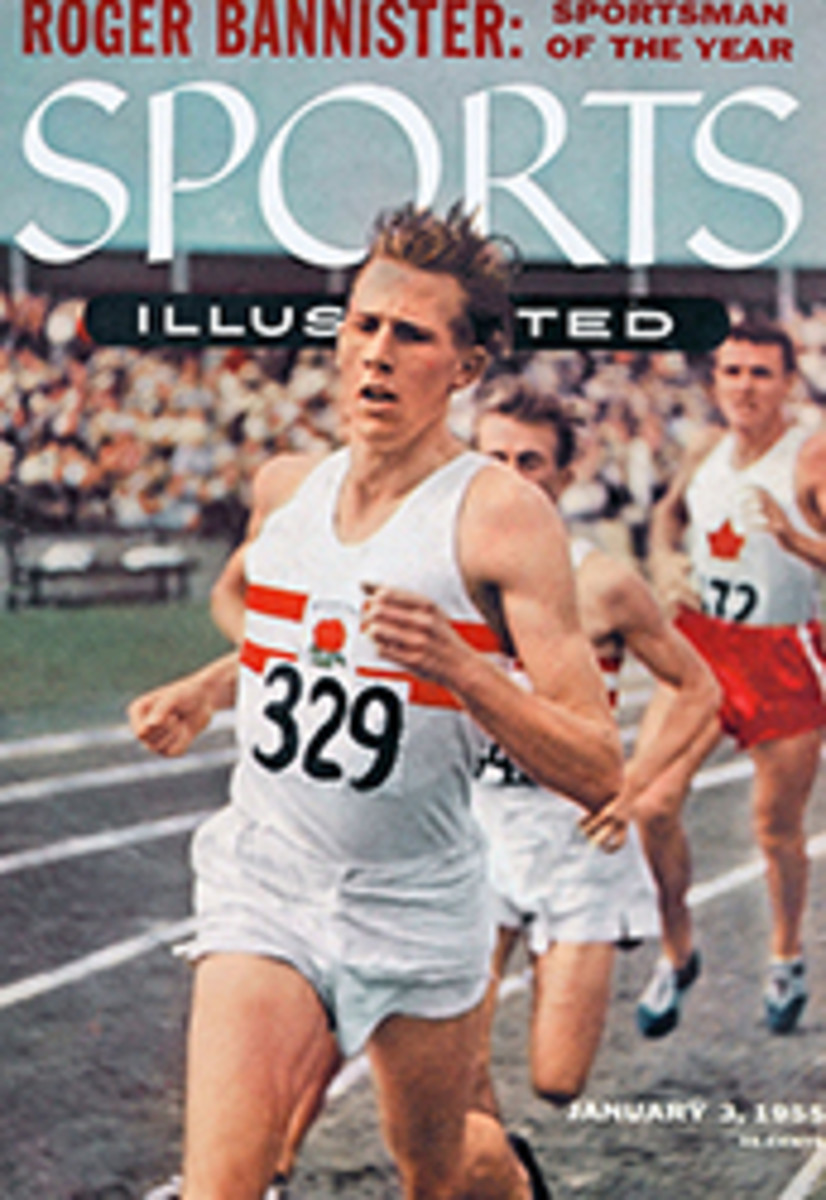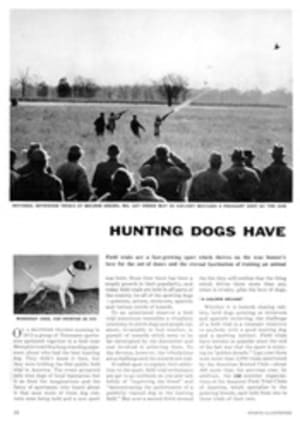
WINTER WORKERS
There's a pot of gold in winter racing. Big-name horses which 10 years ago would have hibernated like a millionaire taking a rest cure are now expected to work for their living the year round. Winter racing has become very big time indeed.
The current Santa Anita meeting, for instance, offers nearly $1 million for the 29 stakes on its roster. At Hialeah, which opens January 17th, there is half a million to be panned out of 16 stakes during the 40-day meet. The Fair Grounds in New Orleans, while not in the upper financial echelons, nevertheless offers enough inducements to draw such talent as Roman Patrol and Royal Coinage, both of which are after the Louisiana Derby.
High Gun, top three-year-old of 1954, is going to race in Florida. Determine, leading money horse and winner of the Kentucky Derby, is entered in races both there and in California. Nashua is in Florida to prep for the Flamingo Stakes, in which his three-year-old courage will be tested. And his. runner-up and closest rival, Summer Tan, not to be outdone, is right there sharing Barn A with him.
Although horsemen may differ as to whether or not you can race a thoroughbred around the calendar without harming him, the public knows what it likes. Attendance figures in California last year topped those of New York for the first time, proving that winter racing and the star system have the popular vote.
Much of this credit for the round-the-clock zest for racing goes to Joseph E. Widener, who in 1931 took over Hialeah and turned it into a major tourist attraction. Widener, knowing that money is a magnet, made the purses important enough to draw better horses than had ever raced in Florida before. Three years later, California got into the act and Santa Anita came into being through the determination of Dr. Charles Strub. At least two of its races, the Santa Anita Maturity and the Santa Anita Handicap, are of as much national interest today as any races in the East.
TWO FOR THE MONEY
This year the Santa Anita Derby (February 19th) will be watched more closely than usual, thanks to last year's victory by the little gray, Determine, which put this one away before marching on Louisville to take the Kentucky Derby. The two important candidates are Calumet's Trentonian and Murcain Stable's Blue Ruler.
The first of the winter's $100,000 features is the Maturity on January 29th. But the Santa Anita Handicap February 26th is the stellar attraction for older horses. Calumet's Mark-Ye-Well has been assigned top weight of 130, making him the only horse except Seabiscuit, California's old idol, to head the weights three times. Determine is second with 129 pounds, or four over scale. He will probably be the favorite in Walter Marty's winter book. The quick-running gray is entered in the Widener at Hialeah February 19th.
Adding great interest to the meeting is the series of seven grass stakes to be run over the Camino Real turf course opened last year. Among these is the $100,000 San Juan Capistrano.
There will be turf stakes at Hialeah, too. It was the Florida track, after all, that pioneered modern grass racing. Important on the schedule is the $100,000 Widener February 19th and the big three-year-old tournament, the Flamingo, with its hundred-grand tag, on February 26th.
ACTION IN NEW YORK
Back in New York things are brewing. Last summer The Jockey Club acknowledged the need to make things more comfortable for the two-dollar bettor and his more prodigal brother and presented a plan by which the New York tracks would consolidate under the Belmont banner and be put on a nonprofit basis. Now Jim Butler, grandson of the doughty Irishman who fought (and beat) The Jockey Club some 50 years ago, is repeating history.
Butler, whose Empire City Racing Association was refused dates this year because it had no track and had been running at Jamaica, has come up with a plan which differs considerably from that of The Jockey Club. The major difference is that the nonprofit idea is out. So, one way or another, at long last, something may be done about the New York tracks, which are certainly not comparable to the rest of the country for comfort. Governor Averell Harriman, an old racing man himself, has made known his interest, and even conservative Ashley Trimble Cole, chairman of the State Racing Commission, has agreed that the once "big apple" of racing may turn rotten if something is not done.
PHOTO
DETERMINE
ILLUSTRATION

